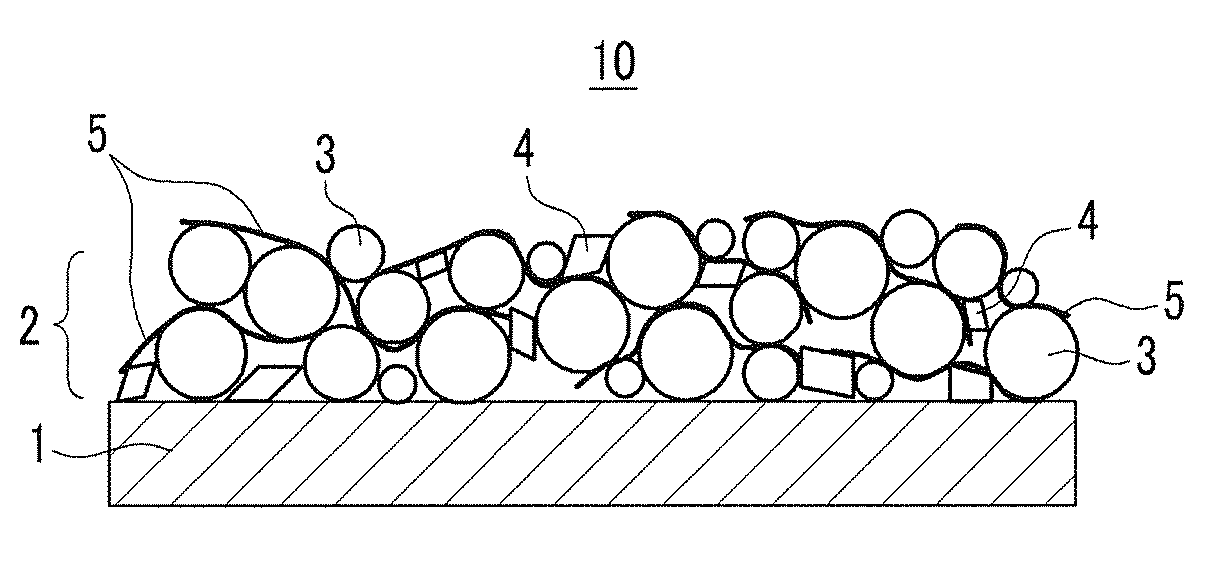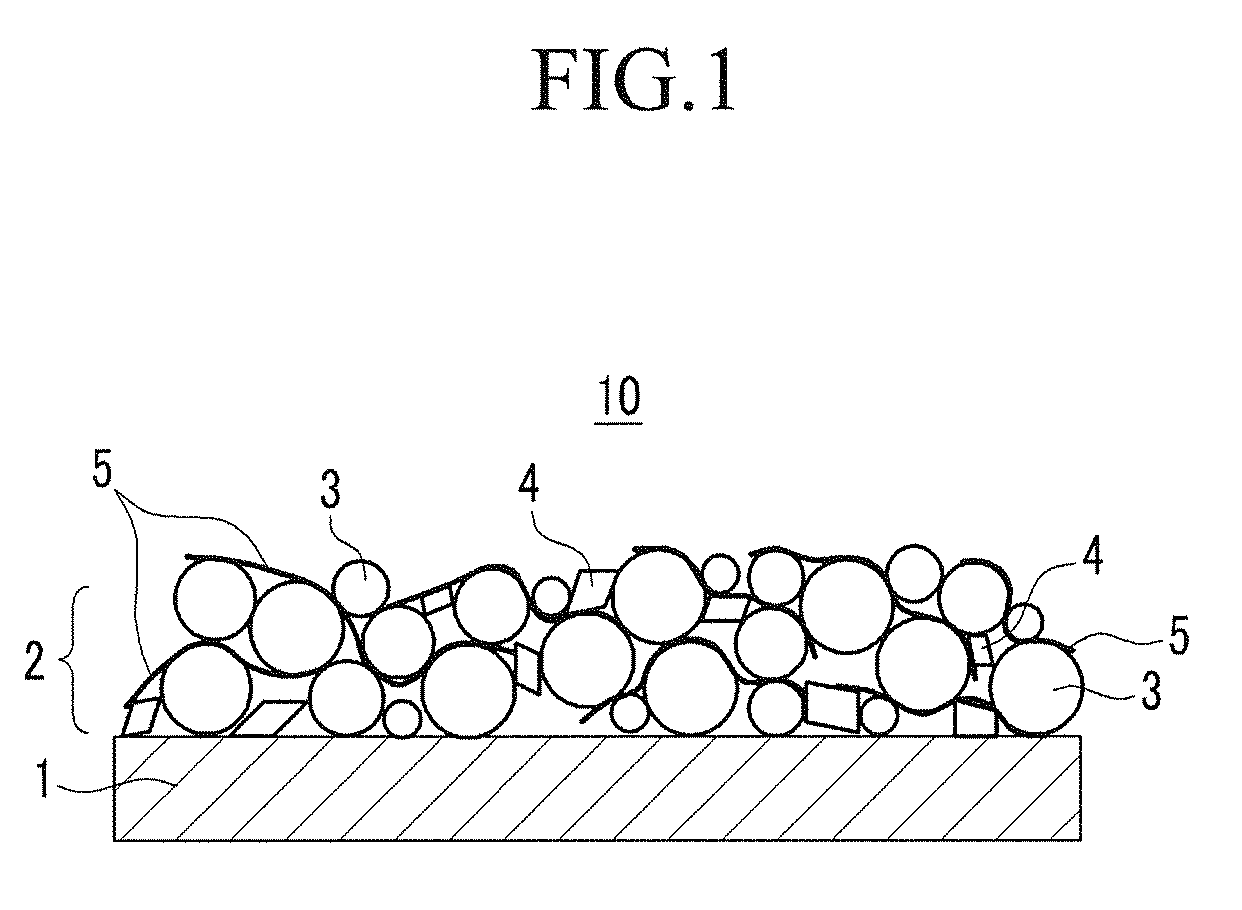Negative active material for rechargeable lithium battery, and method of preparing the same
a technology of negative active materials and rechargeable lithium batteries, which is applied in the direction of electrode manufacturing processes, cell components, electrochemical generators, etc., can solve the problems of low energy density per unit volume, dangers such as explosion or combustion, and low densities of graphite active materials, so as to suppress the initial irreversible reaction, improve the initial capacity, and improve the initial efficiency
- Summary
- Abstract
- Description
- Claims
- Application Information
AI Technical Summary
Benefits of technology
Problems solved by technology
Method used
Image
Examples
example 1
[0108]SiO with a Si:SiO2 mole ratio of 1:1 was mixed with Al (with a formation free energy value of −1582 kJ / mol) at a SiO:Al mole ratio of 3:1. The mixture was put in a stainless steel vial containing steel balls at 20 times the weight of the mixture, and a small amount of n-hexane as a reaction controlling agent. The mixture was milled at 500 to 700 rpm for 100 hours to form a mechanical alloy powder. The acquired powder was heat-treated under a nitrogen atmosphere at 900° C. for about 6 hours, to form a negative active material. The resulting negative material has a nano-composite having a Si:SiO2:Al2O3 mole ratio of 3 / 2:1 / 2:1 / 3.
[0109]80 wt % of the resulting negative active material, 10 wt % of Super-P, and 10 wt % of a polytetrafluoroethylene binder were mixed in N-methylpyrrolidone as a solvent, to produce a negative active material slurry. The negative active material slurry was coated on a copper-foil current collector to produce a negative electrode.
example 2
[0110]SiO with a Si:SiO2 mole ratio of 1:1 was mixed with Al (with a formation free energy value of −1582 kJ / mol) at a mole ratio of 3:1. The mixture was put in a stainless steel vial containing steel balls at 20 times the weight of the mixture and a small amount of n-hexane as a reaction controlling agent. The mixture was milled at about 500 to 700 rpm for 100 hours to form a mechanical alloy, and subsequently a negative active material. The resulting negative material has a Si:SiO2:Al2O3 mole ratio of 3 / 2:1 / 2:1 / 3.
[0111]80 wt % of the resulting negative active material, 10 wt % of Super-P, and 10 wt % of a polytetrafluoroethylene binder were mixed in N-methylpyrrolidone as a solvent, to provide a negative active material slurry. The negative active material slurry was coated on a copper-foil current collector to provide a negative electrode.
example 3
[0112]SiO with a Si:SiO2 mole ratio of 1:1 was mixed with Ca (with a formation free energy value of −1480 kJ / mol) at a mole ratio of 3:1. The mixture was put in a stainless steel vial containing steel balls at 20 times the weight of the mixture and a small amount of n-hexane as a reaction controlling agent. The mixture was milled at about 500 to 700 rpm for 50 hours to form a mechanical alloy powder. The acquired powder was heat-treated for a reaction under an argon atmosphere at 900° C. for about 6 hours, to provide a negative active material. The resulting negative material has a composite with a Si:SiO2:CaO mole ratio of 3 / 2:1 / 2:1 / 3.
[0113]80 wt % of the resulting negative active material, 10 wt % of Super-P, and 10 wt % of a polytetrafluoroethylene binder were mixed in N-methylpyrrolidone as a solvent, to provide a negative active material slurry. The negative active material slurry was coated on a copper-foil current collector to provide a negative electrode.
PUM
| Property | Measurement | Unit |
|---|---|---|
| electrical conductivity | aaaaa | aaaaa |
| particle size | aaaaa | aaaaa |
| specific surface area | aaaaa | aaaaa |
Abstract
Description
Claims
Application Information
 Login to View More
Login to View More - R&D
- Intellectual Property
- Life Sciences
- Materials
- Tech Scout
- Unparalleled Data Quality
- Higher Quality Content
- 60% Fewer Hallucinations
Browse by: Latest US Patents, China's latest patents, Technical Efficacy Thesaurus, Application Domain, Technology Topic, Popular Technical Reports.
© 2025 PatSnap. All rights reserved.Legal|Privacy policy|Modern Slavery Act Transparency Statement|Sitemap|About US| Contact US: help@patsnap.com



